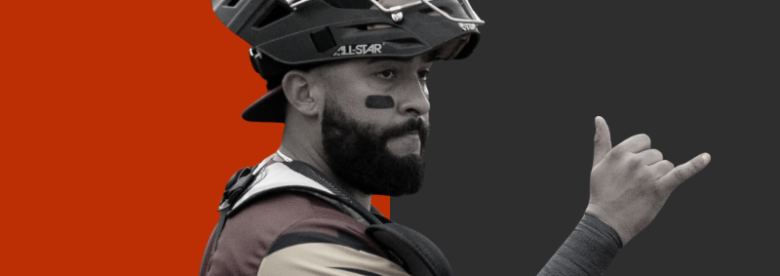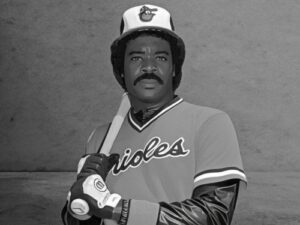Ever been smacked by a baseball going 90 mph? No? Well, neither have I. Visualizing it gives me the creeps. Back in the day, catchers had to risk their safety with no protective gear. No masks, no helmets – just guts and glory.
You see, in our quest to make America’s pastime safer over the years, we’ve seen quite a journey from rudimentary catcher’s masks to today’s high-tech helmets.
We’ll explore how these protective gears evolved – all those changes driven by daring innovators, heartbreaking injuries, and relentless technological advancements that wouldn’t take ‘no’ for an answer. Curious about how MLB shaped player safety rules or how other sports borrowed a leaf from baseball’s book? Buckle up! You’re in for quite a ride!
The Early Days of Baseball and the Absence of Protective Gear
Imagine stepping onto a baseball diamond, the roar of the crowd filling your ears. But there’s something missing: protective gear. Back in baseball’s early days, that was a reality for catchers.
Catchers were expected to get behind home plate without any safety equipment – no masks or helmets. Sounds unthinkable today, right? They risked serious injury every time they stepped on the field because they had nothing but their skill and quick reflexes to protect them from high-speed pitches.
This lack of protection wasn’t due to oversight or ignorance; rather it was born out of necessity. Baseball began as a leisurely pastime with an underhand pitching style where speed wasn’t paramount. This allowed catchers to work without much fear for their physical well-being.
Risks Associated With Lack Of Protective Gear
But when overhand pitching started gaining popularity around the 1880s, ball speeds increased dramatically. This change upped risks faced by unprotected catchers manifold – bruised faces became common occurrences at games.
Injuries weren’t limited just to minor bruises though – cases involving broken bones and concussions weren’t unheard of either. It is said that some brave souls even lost teeth in the line of duty. As funny as it sounds now, this risky business laid the groundwork for evolution toward better player safety measures.
No Pain No Gain?
If you’re wondering why players didn’t protest, the answer lies in the ethos of those times. The common belief was that pain and injuries were part and parcel of being a catcher – kind of like an occupational hazard.
However, as the clock ticked away, it was evident that this mindset couldn’t hold water. Folks began to grasp that they shouldn’t trade off safety for a love of sport or bravado. This rising consciousness paved the way for the debut of initial protective equipment.
Introduction of Catcher’s Masks: A Turning Point in Player Safety
The introduction of the catcher’s mask marked a significant shift in baseball, prioritizing player safety. Before this protective gear was introduced, catchers faced high risks on the field.
Evolution of Mask Designs
In the early days, masks were rudimentary at best. The first designs resembled fencing masks with padded frames and metal bars for protection. These initial models offered limited visibility and comfort but gave some level of face safeguarding.
The evolution saw these designs transform into more effective forms over time. Baseball Home traces back this progression detailing each change that occurred through decades to improve not only safety but also performance.
This transition wasn’t smooth sailing though. Some players resisted using them as they felt it affected their game negatively while others embraced it recognizing its potential benefits like decreased risk of injury from stray balls or wild pitches. According to SABR, many notable figures including Hall Of Famer Roger Bresnahan championed the use and improvement of these masks despite facing backlash initially.
We can now look back and see how crucial this phase was in shaping modern baseball. From those primitive versions came innovations such as helmets with built-in facemasks, offering increased coverage without sacrificing vision or comfort—a testament to human ingenuity driven by necessity.
Transition from Masks to Helmets
The move from catcher’s masks to helmets wasn’t just a style change. It was an essential evolution for the safety of players in baseball.
The Role of Batting Helmets
When batting helmets were introduced, they marked a significant shift in player protection. Before their inception, it was not uncommon for batters and catchers alike to take hits directly on their unprotected heads – risking serious injury.
In fact, Ray Chapman’s tragic death, struck by a pitch in 1920, underscored the dire need for protective gear. His unfortunate incident pushed Major League Baseball (MLB) into considering more robust measures like adopting helmets as part of standard equipment.
This new protective measure didn’t come without resistance though. Many old-school players felt that wearing these newfangled contraptions would be akin to admitting fear – which couldn’t be further from the truth. Wearing a helmet meant acknowledging reality: high-speed pitches can cause severe injuries or even prove fatal.
Helmets Become Mandatory
Fast forward some years later; MLB took decisive action towards enhancing player safety. In 1956, Kansas City Athletics owner Arnold Johnson brought forth what many considered radical at the time – mandatory use of batting helmets both during practice and games.
To put things into perspective regarding this ground-breaking rule adoption: research shows how dramatically head injuries dropped post-implementation of helmets. That’s proof in the pudding, as they say.
While this change didn’t happen overnight, it was an important step towards prioritizing player safety over outdated notions of ‘toughness’. With a clear correlation between helmet use and reduced head injuries, the decision to mandate helmets wasn’t just smart – it was lifesaving.
Helmets Today: A Standard Across Leagues
become an essential part of the game, protecting players from serious injuries. You’ll rarely see a player without one today.
MLB’s Role in Enhancing Player Safety
MLB has taken the lead in protecting their players, investing significant resources to upgrade catcher’s masks to modern helmets. A notable part of this effort involves the evolution from catcher’s masks to contemporary helmets.
High-Profile Injuries Spurring Changes
Injury data plays a significant role in prompting changes. When high-profile players get injured, like Josh Gibson, who suffered multiple concussions throughout his career, the MLB takes notice and steps up its game on safety measures.
A recent survey showed that 5 out of every 10 retired catchers reported suffering at least one concussion during their careers – these are alarming statistics that have spurred on changes. Helmets designed specifically for catchers began making appearances after such incidents.
Current Requirements for Helmets and Masks
Masks alone were not enough; so, full-coverage batting helmets became mandatory in 1971 with earflaps added later on due to increasing injuries near the ear region. Now there is more protection than ever before as new designs continue to roll out under strict guidelines set by MLB itself.
The standard requirements currently involve helmet shell material capable of dispersing impact energy over a large area along with padding materials optimized for absorbing said energy. And guess what? It doesn’t stop here.
All major league clubs must use batting helmets that meet National Operating Committee Standards (NOCSAE standards) starting from June 2007 onwards. And it doesn’t end there. In 2013, MLB approved the use of protective caps for pitchers as well.
Baseball is not just about runs and home runs; it’s also about ensuring everyone gets to enjoy the game safely – from players on the field to fans in the stands. Because at the end of the day, a safe player is a happy player.
Technological Advances in Helmet Design
As baseball’s popularity rose, worries over the well-being of players intensified. It was time for an upgrade from the traditional catcher’s mask. Enter helmets – designed with advanced materials and technologies to offer maximum protection.
The Leap Towards Safer Designs
Helmets started appearing on the scene around the 1950s, but their acceptance wasn’t immediate. With hard shells and interior padding, they were bulkier than masks and not as comfortable. Despite their lack of comfort, helmets provided a much-needed layer of protection.
New features began to emerge over time. Helmets got lighter yet stronger thanks to developments like plastic injection molding technology. ScienceDirect explains this here. Padding also saw improvements through the use of foam rubbers that could absorb more impact force.
Introducing Earflaps: A Game Changer
The addition of earflaps was a significant development – adding extra coverage without sacrificing visibility or hearing ability. This simple design change had far-reaching implications for player safety, effectively reducing instances of serious head injuries by protecting vulnerable areas.
An interesting fact is that it took a while before all players started using these improved helmets; some veterans even continued playing with cap-style helmets due to preference. SABR shares more details on this transition period here.
Focusing On Concussion Protection
In recent years, helmet designs have become more focused on concussion protection. As understanding of concussions and their long-term effects grew, so did the need for better helmet designs.
Today’s helmets use materials that can dissipate impact energy, reducing forces transmitted to the brain during a hit. A major leap in this direction is seen with MLB’s adoption of ISO NORM helmets, designed specifically to withstand high-speed pitches.
What Does The Future Hold?
materials and designs always popping up, it’s clear that the evolution of protective headgear isn’t slowing down anytime soon. The path from traditional catcher’s masks to today’s modern helmets showcases an unending quest for safety and innovation.
Adoption and Adaptation in Softball and Minor Leagues
Catcher’s gear has made its way into softball and minor leagues, but it hasn’t been a straightforward journey. With different standards for equipment, adaptations were necessary.
The Impact of Catcher’s Gear on Softball
Softball catchers face similar challenges to their baseball counterparts. They needed protective gear that wouldn’t hinder movement while still providing sufficient protection.
In the world of softball, adaptation led to lighter masks with better visibility and helmets designed for quicker removal – essential during those fast-paced plays at home plate.
Differences Between Baseball And Softball Catcher’s Equipment
Despite similarities between the sports, there are key differences in catcher’s gear due to differing pitching styles. The lower pitch speed in softball allows for more streamlined chest protectors whereas baseball requires bulkier ones because of higher velocities.
In addition, the Baseball Savings Guide highlights how some companies make female-specific catcher’s gear, which takes into account body shape differences ensuring comfort without compromising safety or performance.
A Look Into The Minor Leagues’ Adoption Process
The story is a bit different when we peek into the adoption process within minor leagues. Here rules aren’t as stringent as MLB, so teams have room to experiment with new designs before they hit major league fields.
This has given rise to some interesting developments like hockey-style helmets making an appearance among catchers. These offer full-head protection, and while not widely adopted in the MLB yet, they’re gaining popularity among younger players.
So there you have it – from masks to helmets, baseball’s safety evolution has sparked changes far beyond its own diamond. As each league adapts these advances to their unique needs, we can all enjoy safer games.
The Influence of Baseball’s Advancements on Other Sports
Baseball has constantly been a trendsetter with regard to keeping players safe, and its effects have extended far beyond the sport. Let’s look at how baseball’s advancements in protective headgear have spread to other sports.
Striking a Balance Between Safety and Game Integrity
A crucial part of any sport is ensuring that players can play safely without compromising the game’s essence. It’s akin to walking a tightrope; too much gear could hamper movement, but too little leaves athletes vulnerable.
This balance became apparent with the evolution from catcher masks to contemporary helmets in baseball. These changes were driven by real-world data showing their effectiveness in reducing injuries. This practical approach won over even staunch traditionalists who initially resisted these changes due to its perceived impact on gameplay.
Inspired by this success, similar steps have been taken in sports like cricket where protective gear such as helmets were made mandatory for batsmen facing fast bowlers after several high-profile incidents. Research confirms that wearing helmets significantly reduces the risk of severe injury – vindicating this shift towards safety without affecting game integrity.
Ripple Effects Beyond The Diamond
The influence didn’t stop there though. Even extreme sports like skateboarding and BMX racing took cues from baseball’s lead. Skaters used to perform death-defying stunts bare-headed until they realized how important helmet use was after witnessing devastating accidents among their peers. Helmet use has been proven to reduce the risk of head injury by as much as 85% in extreme sports such as skateboarding and BMX racing, demonstrating that baseball’s commitment to player safety not only revolutionized its own sport but set a standard for others.
So, you see, baseball’s commitment to player safety didn’t just transform its own sport but set a standard for others to follow. From cricket pitches to skate parks, the legacy of those early catcher’s masks lives on – protecting countless athletes every day and proving that progress never stops when it comes to safeguarding our sporting heroes.
Tracing the journey from catcher’s masks to contemporary helmets in baseball, we’ve explored a thrilling part of sports history. We started with gutsy catchers and their bare faces. Then, we saw how early mask designs gave way to advanced helmets. We witnessed MLB shaping player safety rules while high-profile injuries led to significant changes. We learned about the adoption and adaptation in softball and minor leagues – different sports, similar stories!
And finally, we discovered how baseball’s strides influenced other games too! A constant push towards safer play without compromising on game integrity – that’s what it was all about. In essence: innovations persist; players get safer gear; America’s pastime becomes better protected than ever before.






